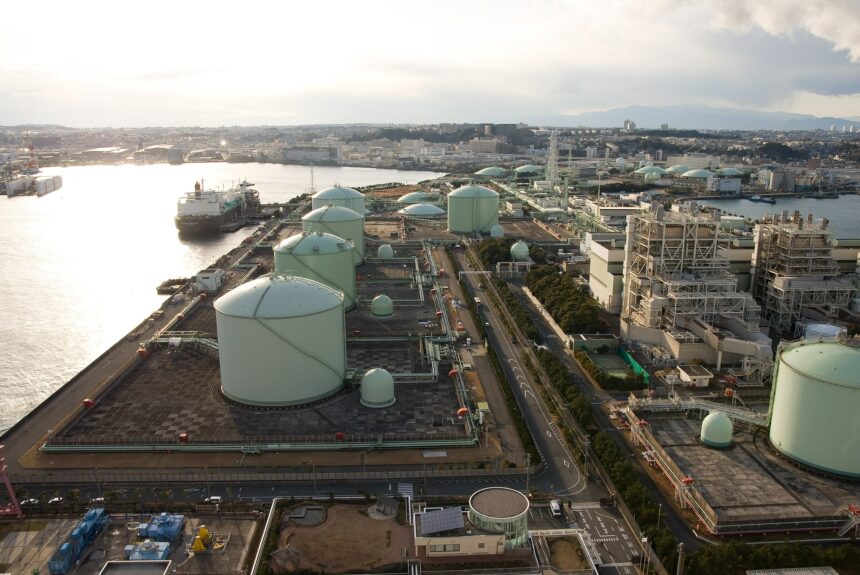In what many are dubbing the next Keystone XL Pipeline, climate activists have turned their attention to blocking liquefied natural gas (LNG) export projects. The attention was compounded last week when the Biden administration announced that it was reevaluating the climate criteria of LNG exports. Much like the battle over Keystone XL, the ire is misguided, and it would be a mistake for the Biden administration to make the permitting reviews more burdensome. Rather than slow walk or block LNG exports, it’s in America’s national interest – for economic, security, and environmental reasons – to let the market determine the appropriate level of natural gas trade.
>>>READ: Reforms to Bond Market Could Unleash Affordable Energy Nationwide
How did the U.S. go from building LNG import terminals to becoming the world’s largest exporter? The shale revolution unlocked an abundance of natural gas beneath U.S. soil, and the economic and environmental benefits have been significant. Apart from 2022, natural gas prices have been consistently low for the last 15 years, which has resulted in dramatic savings in electricity bills and home heating for American families. Households that use natural gas for heat, cooking and clothes drying save more than $1,000 a year on average than those relying on electricity. Natural gas is also a critical input for many energy-intensive manufacturing processes, including many clean energy technologies. It’s also a critical feedstock for fertilizers and agricultural production and has helped farmers to produce more food on less land.
The increase in natural gas production is also the primary reason why the U.S. is a global leader in carbon dioxide emissions reductions. Importantly, the U.S. natural gas industry continues to shrink its environmental and climate footprint. For instance, from 2011 to 2018, methane emissions intensity from natural gas extraction in the Permian Basin fell by nearly 85% even as production jumped by over 416%.
With the abundance of domestic natural gas and demand for energy in emerging economies rising, companies began exporting LNG in 2016. By 2022, the U.S. became the world’s largest LNG exporter, surpassing Russia and setting record highs last year. Russia’s invasion of Ukraine provided a wake-up call that Europe was far too dependent on Russian gas, and as the continent has diversified its natural gas imports, American exporters have stepped up in a big way. While some of that diversification strategy was underway before the war, U.S. exporters ramped up production to support America’s allies across the pond. Europe was the primary destination for LNG exports the last two years and American gas will likely be essential for Europeans wanting to survive the winter for the foreseeable future.
>>>READ: How Free Trade Helps the Environment
In addition to the climate concerns, opponents have also raised concerns that exports would raise prices on families and businesses at home. LNG exports have in fact raised prices, but those higher prices have been marginal. Further, higher prices incentivize more exploration and production, offsetting some of the price increases.
Just as increased natural gas consumption lowered domestic emissions, LNG can be instrumental in lowering emissions in emerging economies. As Paul Bledsoe of the Progressive Policy Institute wrote, “Studies consistently show that coal-to-liquefied natural gas (LNG) switching provides net greenhouse gas emissions reductions, usually between 40-50%, meaning the extent of global emissions reductions from coal displacement will be in part determined by how much U.S. liquefied natural gas reaches overseas coal-using nations.”
U.S. LNG exports have been a tremendous boon to the economy, strengthened relationships with America’s allies and can be imperative to meeting the world’s energy needs and climate goals. It would be regrettable if future terminals suffered the same fate as the Keystone XL pipeline, which was held up by politics and litigation for more than 12 years before the developer abandoned the project.
This anti-energy development trend has gotten much worse and affects all forms of energy. Most recently, environmental activists are trying to block a transmission line that would bring wind power from Arizona to California. These are projects deemed environmentally safe by federal and state regulators. The politicization and blocking of necessary energy infrastructure obstructs job creation, decreases energy supplies (and increases prices), and shifts or outsources emissions that ultimately result in higher global greenhouse gas levels. If the Biden administration caves to the keep-it-in-the-ground climate activists, America, her allies, and the planet will be worse off.
The views and opinions expressed are those of the author’s and do not necessarily reflect the official policy or position of C3.
